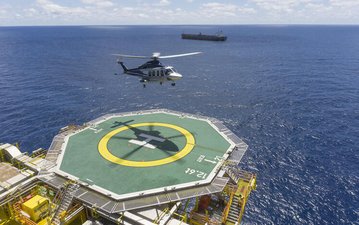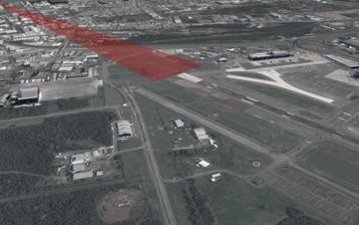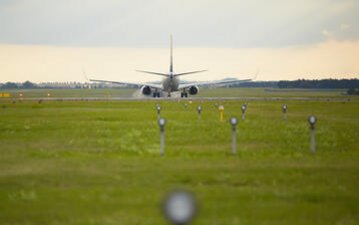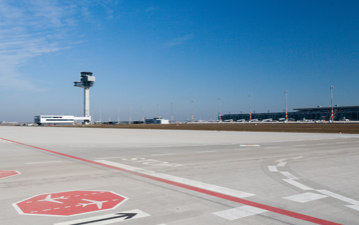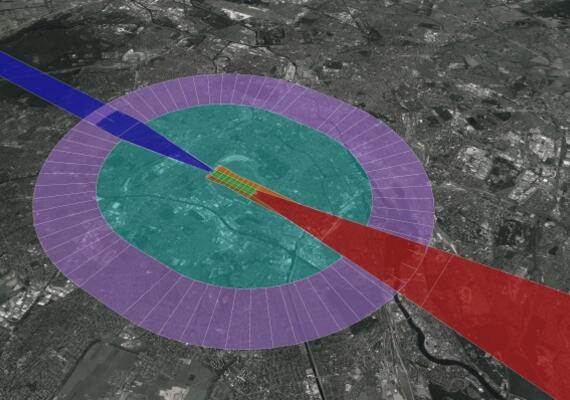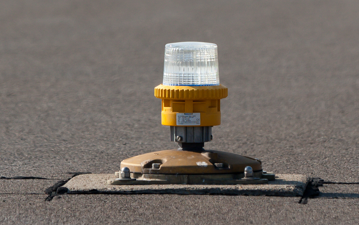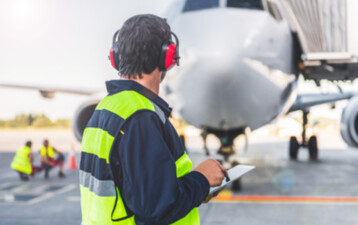Overview
One of airsight's primary missions is to help our clients to achieve and maintain the highest level of safety, while enabling efficient and sustainable air operations. This includes all aspects related to aviation: personnel, organisation, operations, infrastructure, equipment, aircraft and systems.
Our approach goes beyond simple compliance to regulations. We are fully commited to our core-values: excellence, innovation, integrity and collaboration. Our expertise has been praised by more than hundreds of aviation clients and stakeholders around the world. We work for regulators and authorities, aerodrome and aircraft operators, air navigation services providers - and also project developers - to find practical solutions to today's challenges.
Safety Assessments and Aeronautical Studies
According to ICAO and EASA, safety assessments are required to address safety concerns in case of non-compliances or deviations from regulations as well as prior to the implementation of changes in operations or infrastructure.
Very few aerodromes, air traffic systems and procedures, as well as infrastructural or operational changes are fully compliant to the applicable regulations or inherently safe. A safety assessment is required in most cases to ensure all concerns are addressed and safety is not compromised.
This instrument aims to find practical solutions to manage changes and mitigate safety concerns, make informed investment decisions, enable project development or prevent the implementation of cost-intensive measures.
airsight’s safety assessments and aeronautical studies are based on methodologies and statistical sources which received high marks from numerous civil aviation authorities, aerodrome operators, air navigation service providers and other organisations or companies within the aviation industry.

A safety assessment, also referred to as “aeronautical study”, “safety case” or “risk assessment”, is an integral part of risk management.
Safety Assessment Methodology
- System Description
- Hazard Identification
- Risk Analysis
- Risk Assessment
- Risk Mitigation
airsight is a pioneer in this field, and has conducted since 1999 hundreds Safety Assessment on a large variety of complex aviation issues.
Case Studies
Few aerodromes are fully compliant. The most typical deviations can be managed using a safety-based approach.
A Runway End Safety Area, or RESA, is intended to reduce hazards and derived risks of damage to an aircraft undershooting, overrunning or veering-off the runway.
As required by ICAO and EASA requirements, aerodromes not conforming to the RESA specifications should assess the overrun, veer off or undershoot safety risks and undertake appropriate mitigation actions.
Numerous aerodromes commissioned airsight to conduct an assessment of their RESAs. airsight uses a unique quantitative risk-model in order to make informed decision about their current safety level and quantify the benefits of possible mitigating measures (reduction of the declared distances, removal of obstacles etc.) while taking into account the aerodrome specific characteristics.
Numerous airports have several deviations related to the provision of a Runway Strip. Most common deviations are non-frangible objects (buildings, antennas), parallel taxiways or tunnel entrances, fences, public roads or significant slopes in the strip. Above that temporary works involving construction equipment in the strip may cause safety issues.
A runway strip – and its graded portion – aims to “reduce the risk of damage to aircraft running off a runway, and to protect aircraft flying over it during take-off or landing operations” (ICAO Annex 14). Further requirements are introduced by ICAO Aerodrome Design Manual and EASA CS ADR-DSN (e.g. safe use by rescue and firefighting vehicles). On top of that, a large number of national regulations exists: German regulations - for instance - are more permissive than many others to allow construction works in some parts of the non-graded portion of the runway strip (provided that specific conditions are fulfilled).
airsight assisted in the last few years many airports and Civil Aviation Authorities in managing deviations from the above mentioned requirements, conducting on their behalf Safety Assessments and developing mitigating measures to reduce the risks following to the ALARP principles (As Low As Reasonably Practicable) when necessary.
airsight developed and maintain for such exercise a risk-model to quantify the probability of lateral excursion of an aircraft from the runway during take-off and landing. It enables the assessment of the individual risk level for different scenarios based on the local characteristics of each airport (e.g. type of approach, traffic mix, location of obstacles, etc.).
This “safety-based” approach, compliant with aviation regulations, enables airport operators to make informed decisions on the infrastructural or operational measures required to mitigate risks if necessary. Often this approach considerably reduces the investment required to ensure an acceptable level of safety when “full” compliance with infrastructure requirements is not possible or feasible.
Aircraft taxiing or holding too close to the runway may endanger airport operations. Therefore, as per ICAO/EASA, “the location of a runway-holding position shall be such that a holding aircraft or vehicle will not infringe the obstacle free zone, approach surface, take-off climb surface or ILS/MLS critical/sensitive area or interfere with the operation of radio navigation aids” (see ICAO Annex 14 6th Edition, Standard 3.12.3 or analogously GM1 ADR-DSN.D.340 of EASA CS-ADR-DSN, Issue 2, 2015).
In order for aerodromes to fully respect this standard it requires a very precise planning of the location of the holding position, taking into account the entire aircraft fleet, taxiway system geometric aspects and all approach types.
The verification of the compliance of a runway holding positions is therefore a challenging exercise, in which airsight excels and demonstrated its expertise in several projects.
airsight’s methodologies and tools makes the positioning of holding positions and the identification of possible infringements very efficient.
Also, in some cases, non-compliances to the applicable specifications cannot be ensured: simply because it is “technically” not feasible due to the lack of space, or because a displacement of the holding positions would have a too negative impact on airport capacity.
airsight is capable of conducting a safety assessment as per ICAO or EASA requirements and to recommend mitigating measures to maintain or achieve an acceptable level of safety.
airsight was commissioned to conduct a Safety Assessment for non ICAO-compliant independent parallel departures at Berlin-Brandenburg Airport (BER) taking into account Implementing Regulation (EU) No. 1035/2011 (Requirements for the provision of air navigation services).
According to ICAO, independent IFR departures may be conducted from parallel runways, provided the departure tracks diverge by at least 15 degrees immediately after take-off. This design criteria, initially defined to enhance safety of air operations by increasing the spatial separation between departing aircraft, is however a major constraint for developing more efficient and environmentally sustainable flight routes.
Therefore, based on the currently ICAO-compliant routes developed by the German Air Traffic Services (DFS) for BER on its opening, airsight is responsible to evaluate whether – and under which conditions – non ICAO-compliant alternatives may ensure the same Level of Safety.
This Safety Assessment was be aligned to Eurocontrol Safety Assessment Methodology (SAM) as well as above mentioned EU regulation and consider aspects of airspace design, Air Traffic Control, as well as the technologies and equipment available.
In this exercise, airsight combines its expertise in the fields of Safety Assessment, Flight Procedure Design, Airport Operations and Environmental Impact Assessment to develop and assess possible alternative scenarios.
Other safety-related Services
Aviation safety is our priority, and at the core of all services we deliver to our clients.

Do you have a project that you'd like to discuss with us?
Send us a message, we will review your request and get back to you!
How we work
Detailed knowledge of national and international regulations through many years of experiences in aviation projects, consulting and teaching activities
Dedicated and highly qualified team of experts with extensive references on safety assessments, flight operations/procedures as well as obstacle assessments
Worldwide experience in dealing with National Aviation Authorities (incl. military) as well as projects involving stakeholders with diverging interests.
ISO9001:2015 certified Quality Management System to ensure maximum client satisfaction and efficient standardised work processes.

